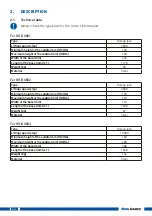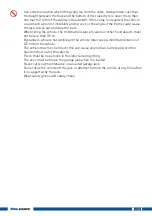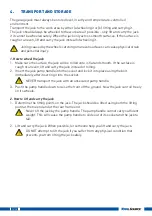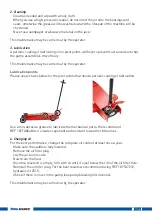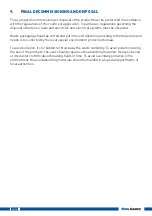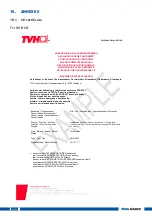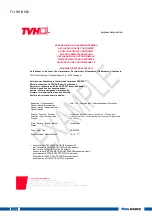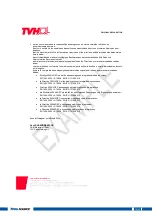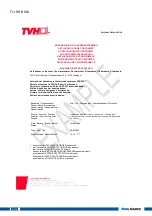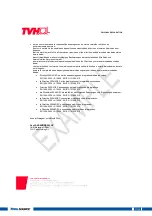
14/28
6. OPERATION
6.1.
Safety instructions for operating the product
• Keep the work area well illuminated.
• Make sure that the garage jack make a firm contact with the ground.
• When the garage jack is in use make sure that no persons are in the vicinity of the
forklift jack or lie down underneath the vehicle to prevent serious injuries.
• Please consult the vehicle’s manual before starting the work. The lifting points of
the vehicle are indicated there.
• A damaged or malfunctioning product must never be used. If damage or
malfunctions are discovered during pre-operation inspection or function tests,
the product must be tagged and removed from service.
• Use the garage jack only on hard level surfaces. Uneven or sloped surfaces create
dangerous working conditions and dangerously obstruct the function of the garage
jack
• Only when the person who has safely placed the garage jack gives the sign that the
installation has been completed, work on the vehicle can commence.
• When the garage jack is in proper position, set the vehicle’s parking brake or
emergency brake.
• Do not support human load.
• Do not support animal load.
• Use wheel chocks on all unlifted wheels to make sure the vehicle is stable.
• Never use the garage jack in a stand-alone way! Always use correctly installed and
dimensioned, approved support stands under the vehicle, immediately after the
jack has lifted the vehicle, and before starting to work on the vehicle.
• Turn the vehicle ignition off.
• Bystanders who are not working on the vehicle must keep a minimum distance of
0.5 m from the vehicle.
6.2. Operating instructions
Carry out the daily maintenance check listed in chapter 7.
1. Lifting
1. Apply the emergency brake on your vehicle and turn
each non-lifted wheel in the opposite direction to prevent
unintended vehicle movements.
2. Make sure the lifting arm is completely lowered, roll the jack
into position beneath the jack support area of the vehicle.
3. Twist the jack handle completely clockwise. Slowly pump the
handle until the saddle just begins to make contact with the
support area.
4. Inspect the position of the saddle beneath the support area,
and make sure it is centred and properly engaging the support
area.








